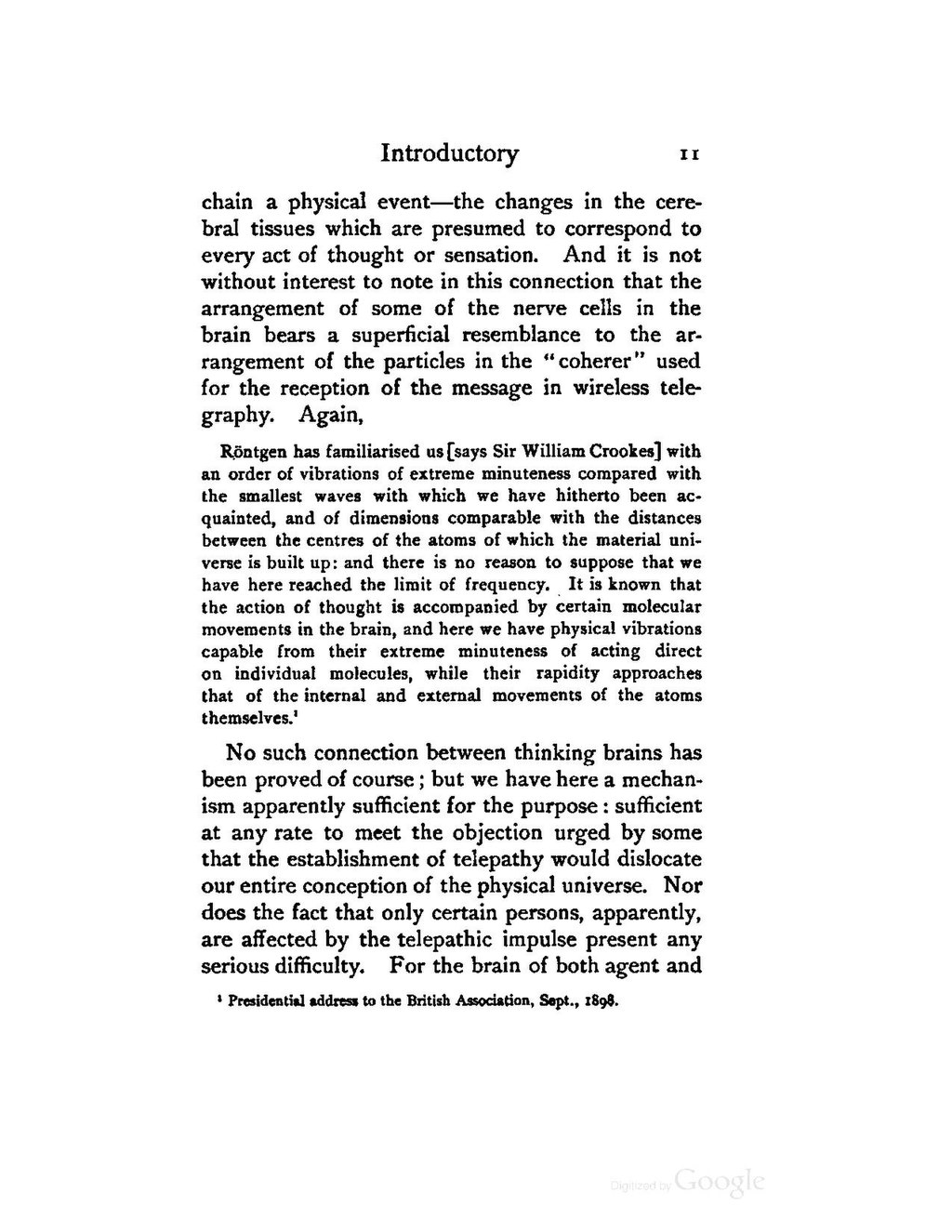chain a physical event—the changes in the cerebral tissues which are presumed to correspond to every act of thought or sensation. And it is not without interest to note in this connection that the arrangement of some of the nerve cells in the brain bears a superficial resemblance to the arrangement of particles in the "coherer" used for the reception of the message in wireless telegraphy. Again,
Röntgen has familiarised us [says Sir William Crookes] with an order of vibrations of extreme minuteness compared with the smallest waves with which we have hitherto been acquainted, and of dimensions comparable with the distances between the centres of the atoms of which the material universe is built up: and there is no reason to suppose that we have here reached the limit of frequency. It is known that the action of thought is accompanied by certain molecular movements in the brain, and here we have physical vibrations capable from their extreme minuteness of acting direct on individual molecules, while their rapidity approaches that of the internal and external movements of the atoms themselves.[1]
No such connection between thinking brains has been proved of course; but we have here a mechanism apparently sufficient for the purpose: sufficient at any rate to meet the objection urged by some that the establishment of telepathy would dislocate our entire conception of the physical universe. Nor does the fact that only certain persons, apparently, are affected by the telepathic impulse present any serious difficulty. For the brain of both agent and
- ↑ Presidential address to the British Association, Sept. 1898.
